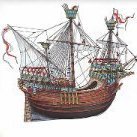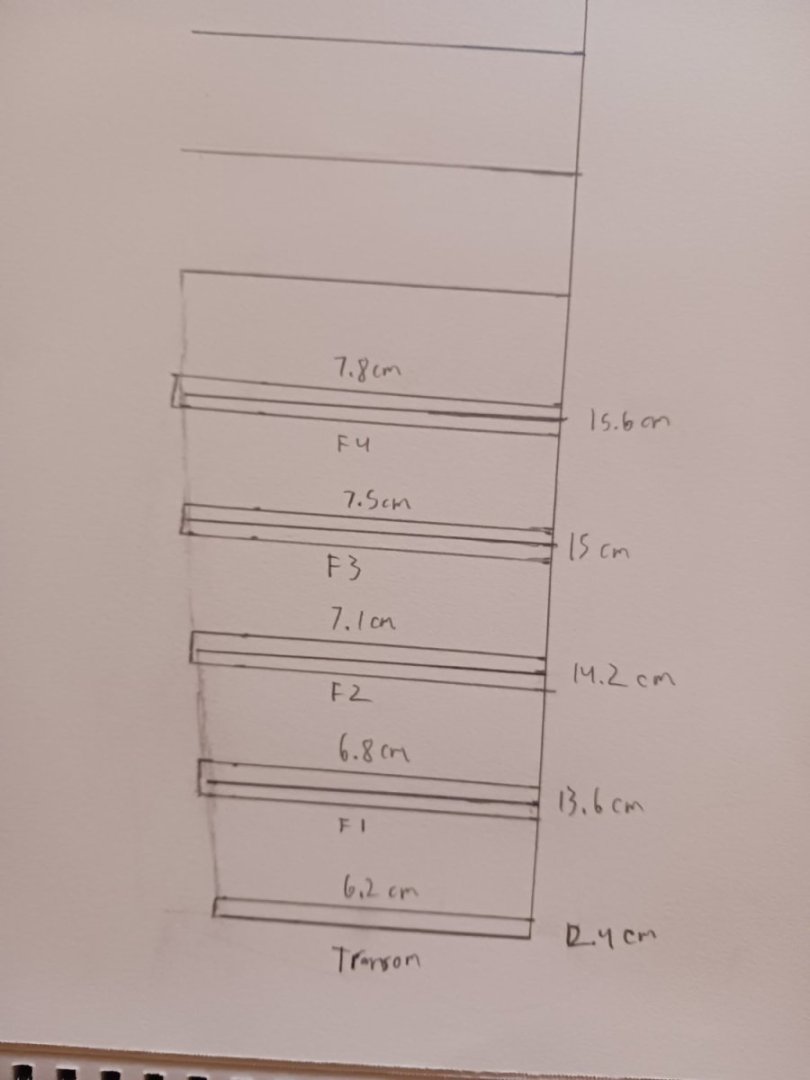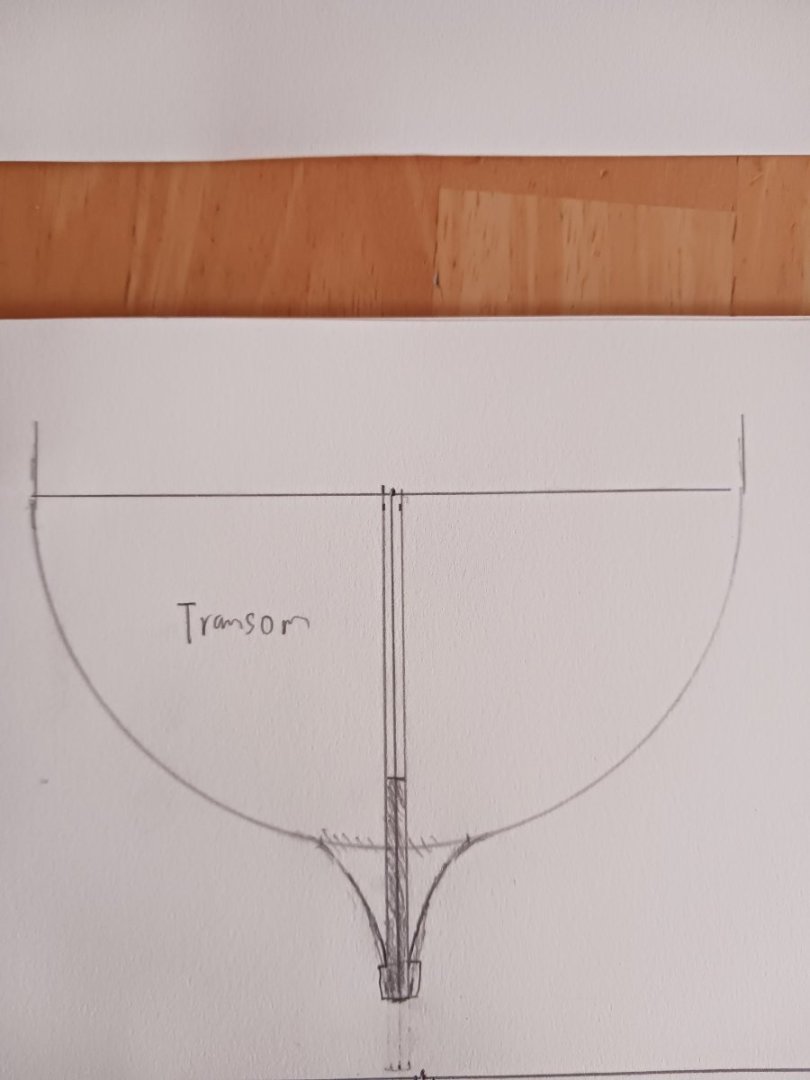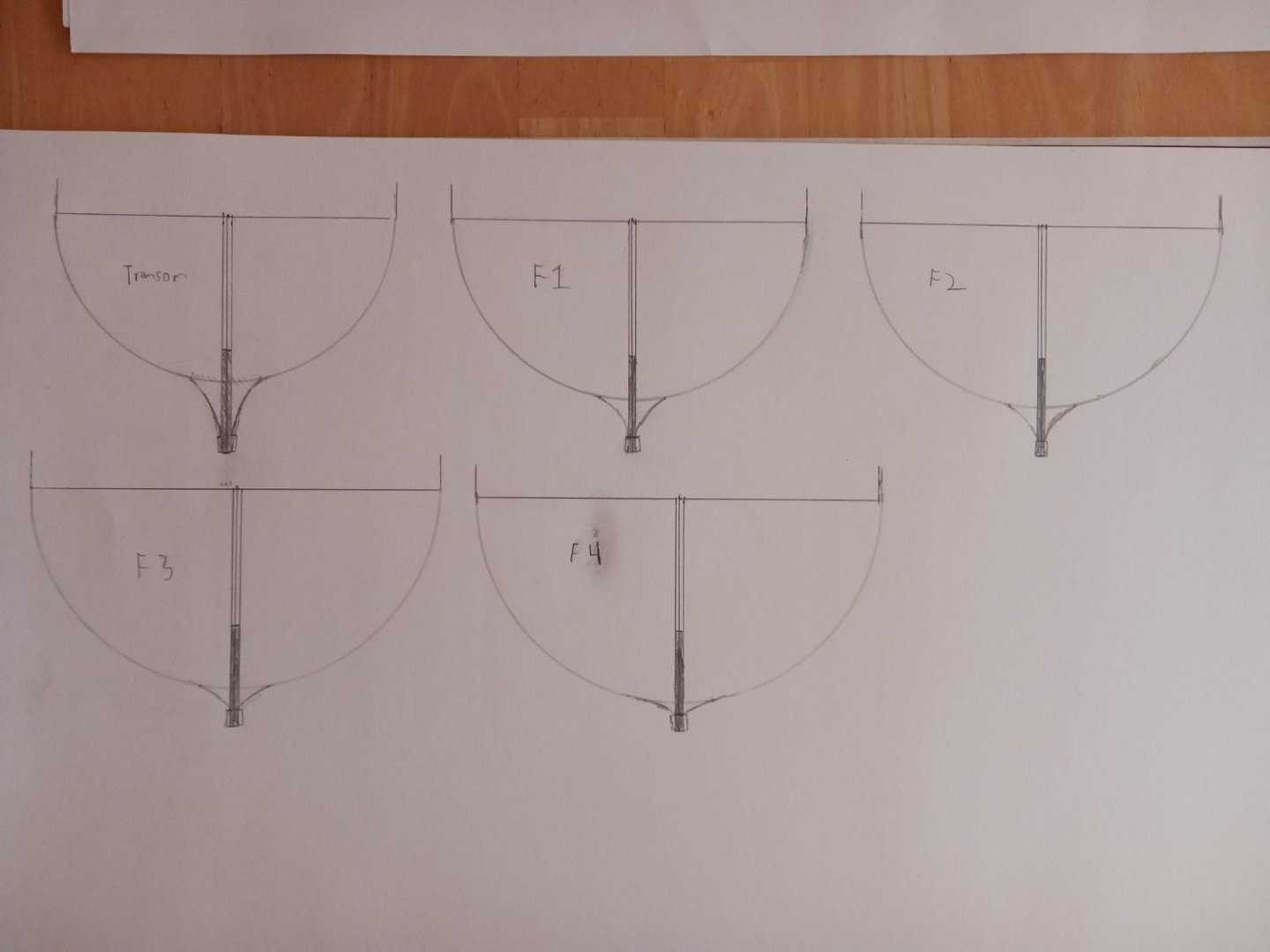-
Posts
1,407 -
Joined
-
Last visited
Content Type
Profiles
Forums
Gallery
Events
Everything posted by Ferrus Manus
-
Don's wood. The framing, false keel, and likely a significant amount of the planking will be made from Don's wood. He is basically sending me raw materials, and I'm sending them back in the form of a model ship. I will be using a lot of my own materials and fittings, however. I will be buying my own blocks, rigging line, brass, turnbuckles, shackles, chain, cloth, etc.
-
To be honest, the thickness and material of the stanchions doesn't matter, because they won't be seen under the interior planking. All I need is for them to all be a uniform width and height.
-
Probably just regular planking. The bulkhead stanchions will be made using Don's wood (I still don't know exactly what type of wood that is, but he showed me a sample and it's perfect for both planking and framing) and I came up with an ingenious idea in the late hours of last night. When it comes time to plank, the upper half of the main wale will extend above the frames, serving as a further support for the stanchions. The stanchions will probably be 1/8 inch square, and a half inch tall. I could also use plastic card for this job, and fill in the rest of the inside area with wood of the same thickness.
-
Today, we will design the first five frames of the Devin Collins. I began by taking measurements of the curve of the hull (as per the first shown diagram) and calculated the maximum width of each frame, then divided the totals by two. This extra width will account for the material taken from each frame during the fairing process. The transom is not listed as a frame, owing to its outward angle in relation to the false keel, as well as its width being half the width of a frame. Then, I began designing frames based on the measurements shown, as well as the total length from the deck to the bottom of the false keel. Remember, the amount of sanding that will be required on both the top and sides of the frames mean that the less-than-perfect measurements intrinsic in non-CAD designs will not end up mattering. This is also due in part to the relatively simple shape of the hull. The uprights shown on the frames are not part of the frame, but rather a placeholder for the stanchions that will support the bulwarks.
-
This looks like a good setup for the rigging of the tiller.
- 177 replies
-
- Perseverance
- Modellers Shipyard
-
(and 1 more)
Tagged with:
-
You might want to add tiller gear just for that extra touch of rigging.
- 177 replies
-
- Perseverance
- Modellers Shipyard
-
(and 1 more)
Tagged with:
-
Your cleat knots and rope coils are the best I've seen in a while. Better than mine!! Good job, Isaiah!
- 177 replies
-
- Perseverance
- Modellers Shipyard
-
(and 1 more)
Tagged with:
-
I am thinking I will start the design work for the frames soon. I have looked at various builds of 18th/19th century longboats, which the hull shape is most similar to. I have come up with a general pattern of frame design, based mostly on the longboats of the era. Hopefully, however, we will end up with a unique hull shape.
-
At this point you're almost done with your brig, so I wouldn't have you change anything. However, for future reference, the rigging instructions for model ships are generally wrong, sometimes egregiously so. The rigging on beginner kits is sometimes simplified to the point of absurdity or complete non-functionality.
- 177 replies
-
- Perseverance
- Modellers Shipyard
-
(and 1 more)
Tagged with:
-
Upon reading the rigging instructions for your Perseverance, I can definitively say that you should have thrown them away and went with what other people have been doing on the rigging of their brigs. Soon, you will develop the instinct to know what correct/incorrect rigging looks like.
- 177 replies
-
- Perseverance
- Modellers Shipyard
-
(and 1 more)
Tagged with:
-
This is a pilot cutter with turnbuckles used on the shrouds. Note the main wale and the pseudo-channels that hold the shrouds away from the hull. This will likely be what I use on this boat. I might use painted styrene for the straps, but I have not decided yet.
-
At this point in history, at least on large ships, turnbuckles would have been used for the shrouds. Would they also have been used for the bowsprit gear? Would deadeyes still have been used on small boats in 1899?
-
Another area of note: the hull was not designed in the late-1800's style, with the straight-vertical bow and the sloping stern. The design for the hull was based largely off ship's boats from the late 18th/early 19th centuries, and pilot cutters of the era used that same hull shape. However, as a later pilot cutter, this design will include more iron strapping and a deck plan more suited to late-19th century cutters.
-
This is the oyster smack Lizzie Annie, a boat of a similar size to the Devin Collins. This showcases an alternative rig for the vessel, as well as some of the core rigging principles that will be employed. Note the fact that the bowsprit makes up about a third of the total length of the ship, as well as the lack of a topsail. The Devin Collins, as a pilot cutter, will need the topsail as well as the flying jib. Pilot cutters raced for the privilege of offering their services to large ships in the Bristol Channel, necessitating the obscenely large sail area.
-
This would have been a pilot cutter, a ship that would have needed a large sail area for the displacement, and would have been relatively small and compact. However, this vessel is not based on any particular design of ship, the reasoning of which we will get into later. Yes. I have designed another wood model, but I soon realized I would need experience. This boat has a relatively simple shape and deck plan, as well as simple masting. Most importantly, however, there are ample references.
-
@Louie da fly @Wawona59 @Knocklouder @Isaiah I saved you guys seats, popcorn and drinks are free.
-
Welcome to this build log. If you're wondering what happened to the Queen Elizabeth galleon, I have postponed that build in order to do this. This will be a scratchbuild made mostly of wood, and I already have some comprehensive full-scale plans made. Remember Don, the man referenced in my Senora Fielden research log? Well, this is for him and his wife. Both are good friends of mine, and Don has seen the designs. My main goal in posting this log considerably before I plan on making sawdust is that I want to iron out some of the questions in procedure and perhaps design. This is the original prototype of the cutter build. While the arrangement of the deck will be considerably different, the hull shape and rig are functionally the same. The final length of the ship (bowsprit to spanker) will be around 3 feet, while the height is somewhere around 4 feet. The rig is subject to change. These are the plans as they are:
-
Just wait til you see the Vasa he finished! His builds are definitely some of the best on the forum, and that's before you realize the insanely tiny scale.
- 323 replies
-
- Sovereign of the Seas
- Airfix
-
(and 1 more)
Tagged with:
-
Remember, this is a 1/600 scale model. Most modelers wouldn't even attempt the lines, which already puts your model far above most others.
-
Now, onto the next issue: the rudder preventer configuration. I used a complex chain configuration on the Spanish Galleon, but none on the Golden Hinde. The truth is, almost none of the period artworks depict rudder preventers on any of the ships. So, your guess is as good as any other. However, I have an idea. I might be able to put an eyebolt into the bottom of one of the knees holding up the stern gallery. See my original Golden Hinde build for a look at what I'm talking about. This eyebolt could be the end point for the rudder preventer.
-
Anyway, does anyone know a technique to put decals on silkspan? Remember, silkspan is a flexible material upon which decals might crack. I plan to put "E R" regalia on the mainsail, perhaps along with a Tudor Rose.
About us
Modelshipworld - Advancing Ship Modeling through Research
SSL Secured
Your security is important for us so this Website is SSL-Secured
NRG Mailing Address
Nautical Research Guild
237 South Lincoln Street
Westmont IL, 60559-1917
Model Ship World ® and the MSW logo are Registered Trademarks, and belong to the Nautical Research Guild (United States Patent and Trademark Office: No. 6,929,264 & No. 6,929,274, registered Dec. 20, 2022)
Helpful Links
About the NRG
If you enjoy building ship models that are historically accurate as well as beautiful, then The Nautical Research Guild (NRG) is just right for you.
The Guild is a non-profit educational organization whose mission is to “Advance Ship Modeling Through Research”. We provide support to our members in their efforts to raise the quality of their model ships.
The Nautical Research Guild has published our world-renowned quarterly magazine, The Nautical Research Journal, since 1955. The pages of the Journal are full of articles by accomplished ship modelers who show you how they create those exquisite details on their models, and by maritime historians who show you the correct details to build. The Journal is available in both print and digital editions. Go to the NRG web site (www.thenrg.org) to download a complimentary digital copy of the Journal. The NRG also publishes plan sets, books and compilations of back issues of the Journal and the former Ships in Scale and Model Ship Builder magazines.










